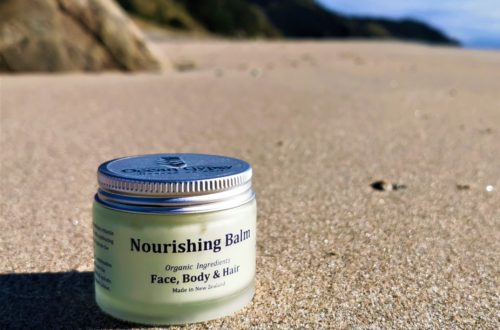Why Go Gluten Free When Going Through Peri-Menopause & Menopause?
Menopause is a significant transition in a woman’s life, marked by hormonal changes that can bring about a range of symptoms. While many women focus on managing hot flashes, mood swings, and sleep disturbances, thinking its solely due to this transition. In actual fact it maybe due to the gluten being eating!
Gluten and Thyroid Hormones: A Sneaky Mimic
One of the lesser-known but crucial reasons to consider going gluten-free during menopause is the relationship between gluten and thyroid function. Gluten, a protein found in grains like wheat, barley, and rye, contains a protein called gliadin. For some people, gliadin can trigger an autoimmune response that damages the lining of the small intestine, leading to conditions like celiac disease or non-celiac gluten sensitivity.
But the connection between gluten and thyroid health goes beyond digestive issues. Research has shown that gliadin, the protein in gluten, can mimic the structure of thyroid hormones. Gliadin, a protein found in gluten, has been found to mimic the structure of thyroid hormones. Specifically, gliadin can mimic the structure of the thyroid hormone thyroxine (T4). When gliadin mimics thyroid hormones, it can potentially trigger an autoimmune response in susceptible individuals, leading to the body’s immune system mistakenly attacking the thyroid gland. This can result in thyroid dysfunction and imbalances in thyroid hormone levels, which can exacerbate symptoms and complications related to thyroid disorders.
What is T4
Thyroxine (T4) is one of the primary hormones produced by the thyroid gland, and it plays a crucial role in regulating various metabolic processes in the body. Here are some of the key functions of T4:
Metabolism Regulation
T4 helps regulate the body’s metabolism by influencing the rate at which cells use energy. It plays a vital role in maintaining the body’s basal metabolic rate (BMR), which is the amount of energy expended while at rest.
Growth and Development
T4 is essential for normal growth and development, especially in children. It promotes proper growth of bones and tissues and is crucial for brain development.
Protein Synthesis
T4 is involved in the synthesis of proteins, which are essential for the repair and maintenance of tissues and organs in the body.
Regulation of Other Hormones
T4 works in conjunction with other hormones, such as thyroid-stimulating hormone (TSH) from the pituitary gland, to regulate the function of various organs and systems in the body.
Energy Production
T4 plays a role in the production of energy by influencing the metabolism of carbohydrates, fats, and proteins.
Temperature Regulation
T4 helps regulate body temperature by influencing heat production and heat dissipation mechanisms in the body.
Testing
Consult your health professional such as a doctor to get a thyroid test, ask to test for TSH which is standard and ask to get the results for T3 and T4 for more in-depth information.
Consult with a naturopath or nutritionist to gain more insight to your wellbeing and they will also have tests available. Check out my Clinic here at Intuitive Nutrition based in New Zealand.
The Benefits of Going Gluten-Free in Menopause
Improved Digestive Health
Eliminating gluten from your diet can help heal the gut lining, reducing inflammation and improving overall digestive health. This can be especially beneficial during menopause, as digestive issues like bloating, gas, and constipation are common symptoms that many women experience.
Hormonal Balance
By reducing the autoimmune response triggered by gluten, you can help maintain a healthier thyroid function. This, in turn, can help regulate other hormones that are affected during menopause, such as estrogen and progesterone, leading to better hormonal balance and fewer menopausal symptoms.
Increased Energy Levels
Thyroid imbalances can lead to fatigue and low energy levels, which can make the already challenging menopausal transition even more difficult. Going gluten-free can help improve thyroid function, leading to increased energy levels and a greater sense of well-being.
Protecting The Thyroid
As above gluten can mimic thyroid hormones specifically T4. This can trigger an autoimmune response that attacks the thyroid gland and can cause many issues in body function. Often seen as Hashimotos or Hypnothyroidism.
Gluten-Free Food Alternatives
If you’re considering going gluten-free during menopause, there are plenty of delicious and nutritious alternatives to gluten-containing foods that you can enjoy:
Grains and Flours
- Brown rice
- Quinoa
- Buckwheat
- Almond flour
- Coconut flour
- Sorghum
- Corn and Corn Flour
- Tapioca
- Chickpea Flour
- White Rice Flour
Breads and Pastas
For gluten-free breads, select one that has activated seeds and is sourdough. This will increase nutrients and fibre, which is beneficial for gut health. I like Cere’s Organic’s Quinoa Pasta and Sorghum Pasta. They taste delicious and are high in protein.
- Gluten-free bread the one I like is Venerdi Pure Foodie Organic Activated Six Seed Sourdough.
- Brown rice pasta
- Quinoa pasta
- Chickpea pasta
- Gluten-Free Seed Crackers available in supermarket or at https://www.healthsupportnaturally.co.nz/simply-gf-crackers I love their crackers available in NZ
- Gluten-Free Seed Bread available in organic stores or bake your own.
Vegetable, Fruits, Meats and Seafood are all gluten-free
Breakfast Ideas;
Buckwheat Pancakes topped with blueberries and coconut yoghurt
Eggs on gluten-free toast
Avocado on toast
G/F cornflakes and cereals
Smoked Salmon on Gluten Free Bagel
Lunch & Dinner Ideas;
Rice Wraps
Carrot stick or crackers with hummus or guacamole
G/F soups such as pototo and leek, mushroom, tomato best homemade or read the packet.
Stews check any packet sauces for gluten.
Thai food is often gluten free, always check that soy sauce is gluten free, if will be written on the bottle.
Sushi remember to use G/F soy sauce
Quinoa Salad
Sorghum or gluten-free pasta
Unprocessed vegetables and meats
Intuitive Nutrition Seed Crackers
Recipe for approx 2 to 3 trays of seed crackers
Ingredients:
- 200g Organic Sunflower Seeds
- 60g Organic Pumpkin Seeds
- Organic Linseed or Flaxseed
- 100g Sesame Seeds
- 15g Psyllium Husk
- 5g of Celtic Seasalt or other natural salt.
Instructions:
- Preheat oven to 160 C or fan over 140 Celius. Line two large oven trays or three small oven trays with baking paper.
- Mix all ingredients in a bowl with 490ml purified water and let stand for 15 minutes until it thickens into a slightly gluey consistency. Stir and spread the mixture evenly over the tray.
- Bake 1 hour then remove from the oven and mark the cutting lines. Return the tray to the oven for 30 to 60 minutes depending on how thick the crackers are. Switch oven off and leave the crackers in the oven for at least another hour to dry further.
- Remove from the oven and allow to cool completely. Store in an airtight container.
Try adding these;
1/4 cup nutritional yeast & 1 teaspoon onion powder
2 teaspoons Italian herb mix
1/2 teaspoon chilli flakes & 1 teaspoon
of curry powder.
Going Gluten Free in incredibly easy, So why not try going gluten-free to protect your thyroid and digestive system for future damage.


